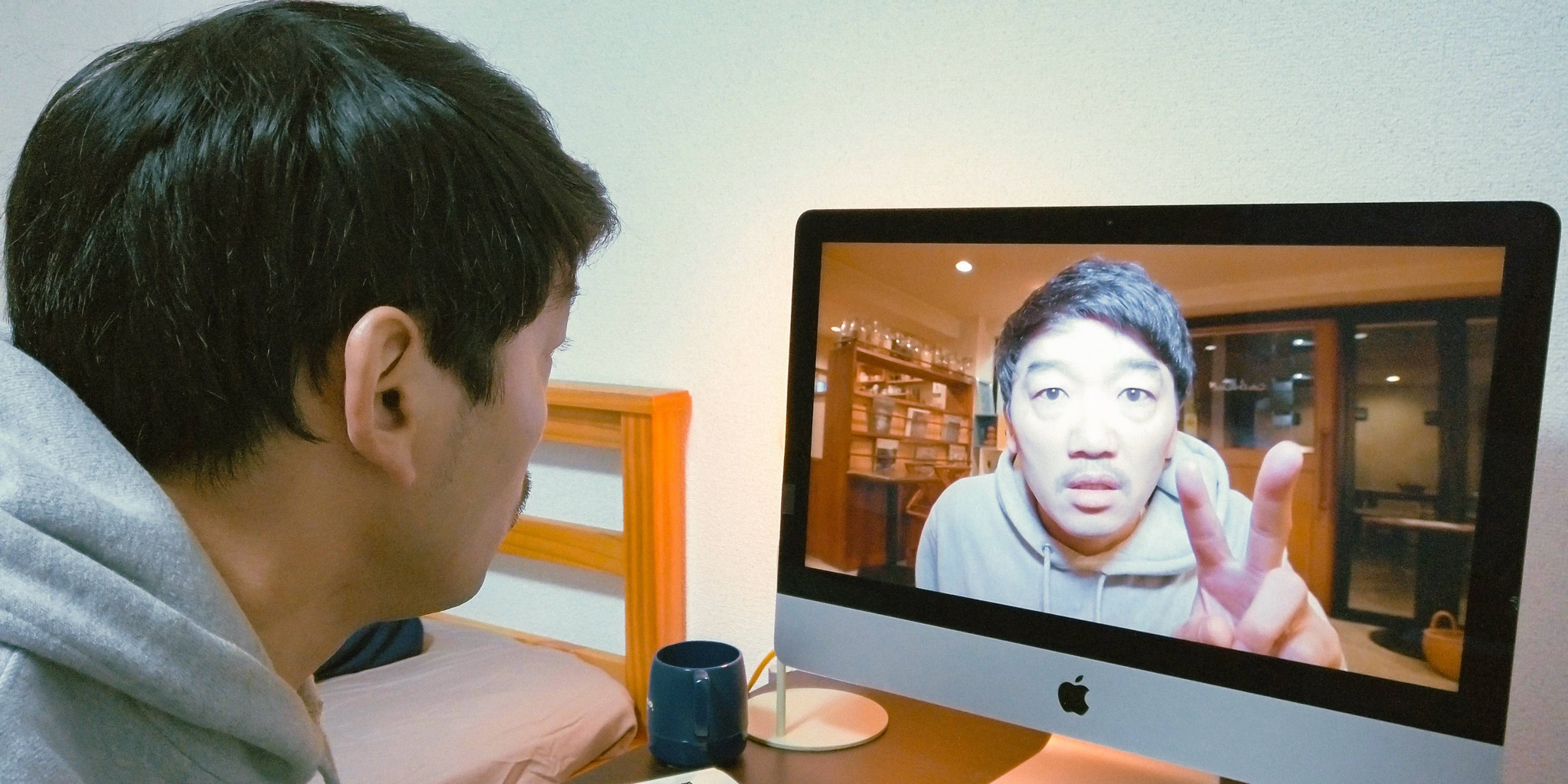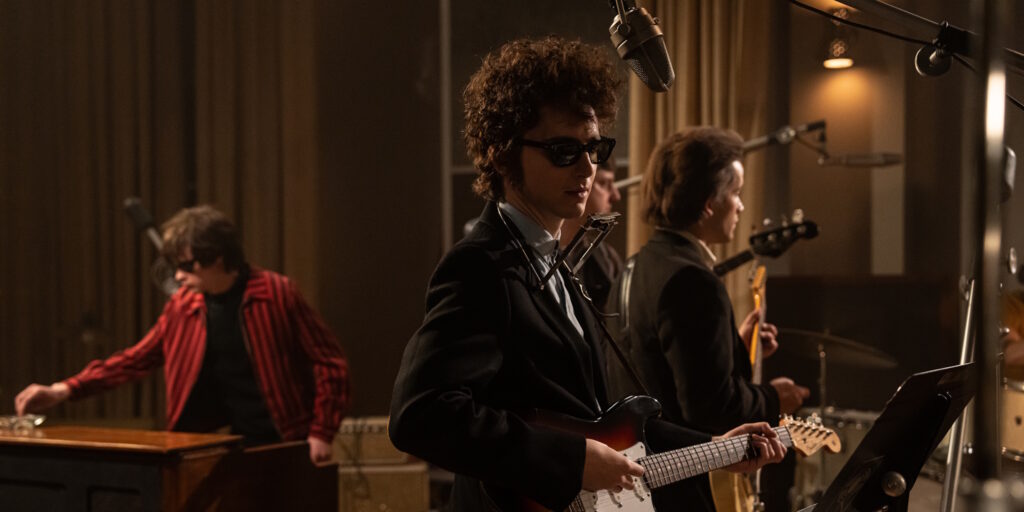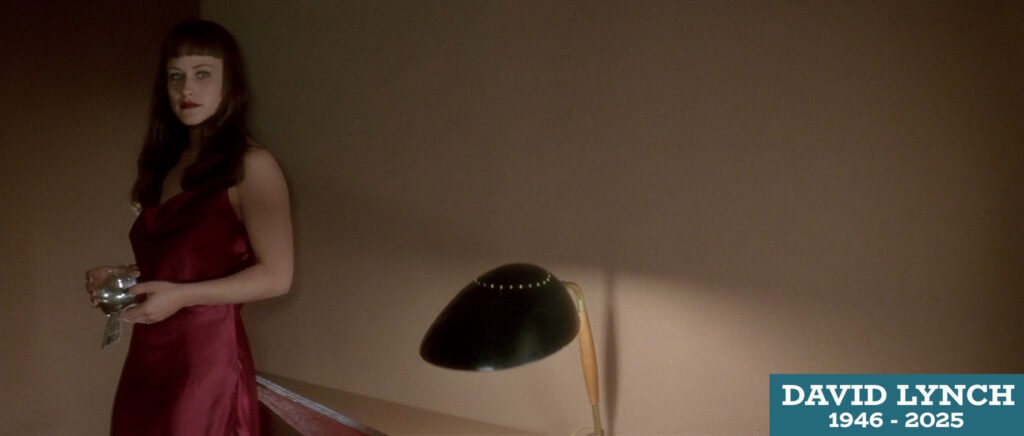[Originally published at Cinema St. Louis’ The Lens.]
The world has been stewing in the ongoing viral pandemic for so long now – two years and counting – that the “Covid film” subgenre has effectively fractalized into several distinct forms of cinema. You’ve got your eerily prescient pre-Covid productions, such as Before the Fire and SLIFF feature The Pink Cloud. You’ve got your explainer documentaries like In the Same Breath and Totally Under Control, as well as singular, quarantine-molded memoirs such as Bo Burnham: Inside. And you’ve got your post-Covid narrative features that variously employ, exploit, or comment on the pandemic, from indie horror films like Host and In the Earth to already-forgotten Hollywood efforts like Locked Down and Songbird.
Japanese director Junta Yamaguchi’s sprightly sci-fi comedy Beyond the Infinite Two Minutes arguably belongs in that third category. Granted, the pandemic is never directly acknowledged in the film, and nothing about this two-bite morsel of head-spinning time-travel zaniness denotes a work that was obviously made during Covid. Reportedly shot at a Kyoto coffee shop for less than $20,000 with just a handful of actors, Beyond resembles many other pre- and post-pandemic micro-budget genre features, in that it finds creative ways to squeeze everything it can from a high-concept premise and meager resources.
That said, screenwriter Makaoto Ueda – who has also penned high-profile Masaaki Yuasa anime projects such as The Tatami Galaxy (2010) and The Night Is Short, Walk on Girl (2017) – seems to draw some inspiration from our Covid-accelerated shift to an increasingly screen-based reality, one in which a not-insignificant form of entertainment consists of videos of people reacting to videos. (It would make for a very odd but perhaps ingenious double bill with Werner Herzog’s Lo and Behold: Reveries of the Connected World.) Moreover, without speculating too wildly on the film’s development, it’s easy to see how being bottled up in lockdown might have given Ueda and Yamaguchi the time and space to meticulously work out the film’s convoluted sci-fi logic and dizzying logistical choreography.
Beyond employs the “single shot, no cuts” gimmick that seems to be in fashion of late, although Yamaguchi is not especially concerned with tricking the viewer into missing the not-all-that-disguised editing seams. The film unfolds in real time over 70 minutes, taking place entirely within a few adjacent locations: a street-level coffee shop, an outside stairwell, two upper-floor apartments, and the storefront next door. (At festivals such as Fantastic Fest, where Beyond made its crowd-pleasing U.S. premiere, the film seems to have been screened in a 110-minute cut, but it’s hard to imagine that it would work as well as it does with that longer running time.)
As the film opens, café manager Kato (Kaznunari Tosa) and barista Aya (Riko Fujitani) are closing for the day, after which Kato retreats to his tiny apartment on the second floor. The viewer doesn’t learn much about him, other than a few semi-salient details: He plays acoustic guitar in a band, he’s self-conscious about this, and he’s crushing on Megumi (Aki Asakura), who works in her father’s barbershop next door. What truly matters is what happens next. Kato’s own face suddenly appears on his computer monitor, and this Other Kato insists that he is speaking from two minutes into the future. Due to some freak hiccup in the space-time continuum that is blessedly never explained, the monitor in Kato’s flat and the monitor in the coffee shop (as well as their respective webcams) are now connected, but with a 120-second delay. The upstairs screen always shows the soon-to-be future, while the downstairs screen always shows the just-happened past. Kato doesn’t manage to keep this extraordinary phenomenon to himself for long, and soon Aya not only learns of the “time TV” but also ropes in their mutual friends (Gôta Ishida, Masashi Suwa, and Yoshifumi Sakai) to brainstorm ways to exploit this very narrow window of foreknowledge.
For its first 25 minutes, Beyond mostly contents itself with rushing up and down the stairs as Kato and company work out the rules of this quantum quirk and prove to their satisfaction that it’s not all just an elaborate prank. Just when Yamaguchi seems like he’s exhausted the possibilities of this premise, the scenario starts getting much more complicated, as the science-minded Ozawa (Sakai) hits on the idea of moving Kato’s computer downstairs so that the two screens are facing one another. The group thereby creates a theoretically infinite hall-of-mirrors “time tunnel,” although, practically speaking, it’s difficult to make out anything happening more than four or five loops from the present in either direction. As one might expect, things quickly start getting out of hand as the characters’ future selves try to convey what has already happened while their past selves try to ensure that it will.
Ozawa uses the lady on the Droste Dutch cocoa tin to explain the concept to his more dimwitted pals – the American equivalent would be the Land O’Lakes butter girl – but Beyond isn’t all that concerned with whether the viewer can keep up with its nested timelines. Yamaguchi’s priority is to maintain the film’s momentum, which he does quite effectively. The two-minute window helps in this respect, as it not only keeps the characters’ money-making schemes relatively small in scale, but it also ensures that no one stays put in front of one monitor or the other for more than a minute or two. Pulling off the one-cut illusion requires shuttle-launch levels of planning and precision from the cast and crew, which is even more impressive given the authentic, idiot-slacker energy of the feature’s action. The wide-angle lens and hectic handheld camera that Yamaguchi employs give Beyond a chaotic, you-are-there sensibility, although this is not technically a found-footage feature.
Philosophically minded viewers may snag on the film’s understanding of causality, and the usual nitpickers will inevitably gripe about the more questionable leaps of scientific logic. (The most glaring implausibility for this critic is the existence of an apparently 100-foot-long iMac power cord.) For a micro-budget feature, however, Beyond is an astonishingly tight little piece of science fiction filmmaking. It begs for the kind of infographic explainer treatment that was afforded to the similarly brain-twisting Primer (2004). Ueda’s screenplay certainly has more notable flaws than mere time-travel plot holes. The script can’t decide if its characters are quick-witted opportunists or oblivious ninnies, and it seems to change its mind depending on the needs of the scene. As in many Japanese comedies, there’s an overreliance on mugging and stock comic-relief archetypes, although it’s admittedly challenging to make time for character development in a 70-minute feature so packed with incident. Most frustratingly, the film completely runs out of steam in its final five minutes, as if the filmmakers lost the final pages of the script and the actors just improvised small talk.
Still, one is reluctant to be too hard on a micro-budget feature that’s so ingeniously constructed and meticulously executed – and ultimately so committed to its goofy, charming scenario. (It’s not much of a spoiler to reveal that the human civilization of the future isn’t about to let a gaggle of numbskulls derail all of reality with their get-rich-quick meddling.) No film can coast to greatness on the strength of a single gimmick, but with Beyond the Infinite Two Minutes, Yamaguchi proves that he has the practicality, cunning, and enthusiasm that all great low-budget genre filmmakers possess.
Beyond the Infinite Two Minutes will be available to rent on major online platforms on Tuesday, Jan. 25.




